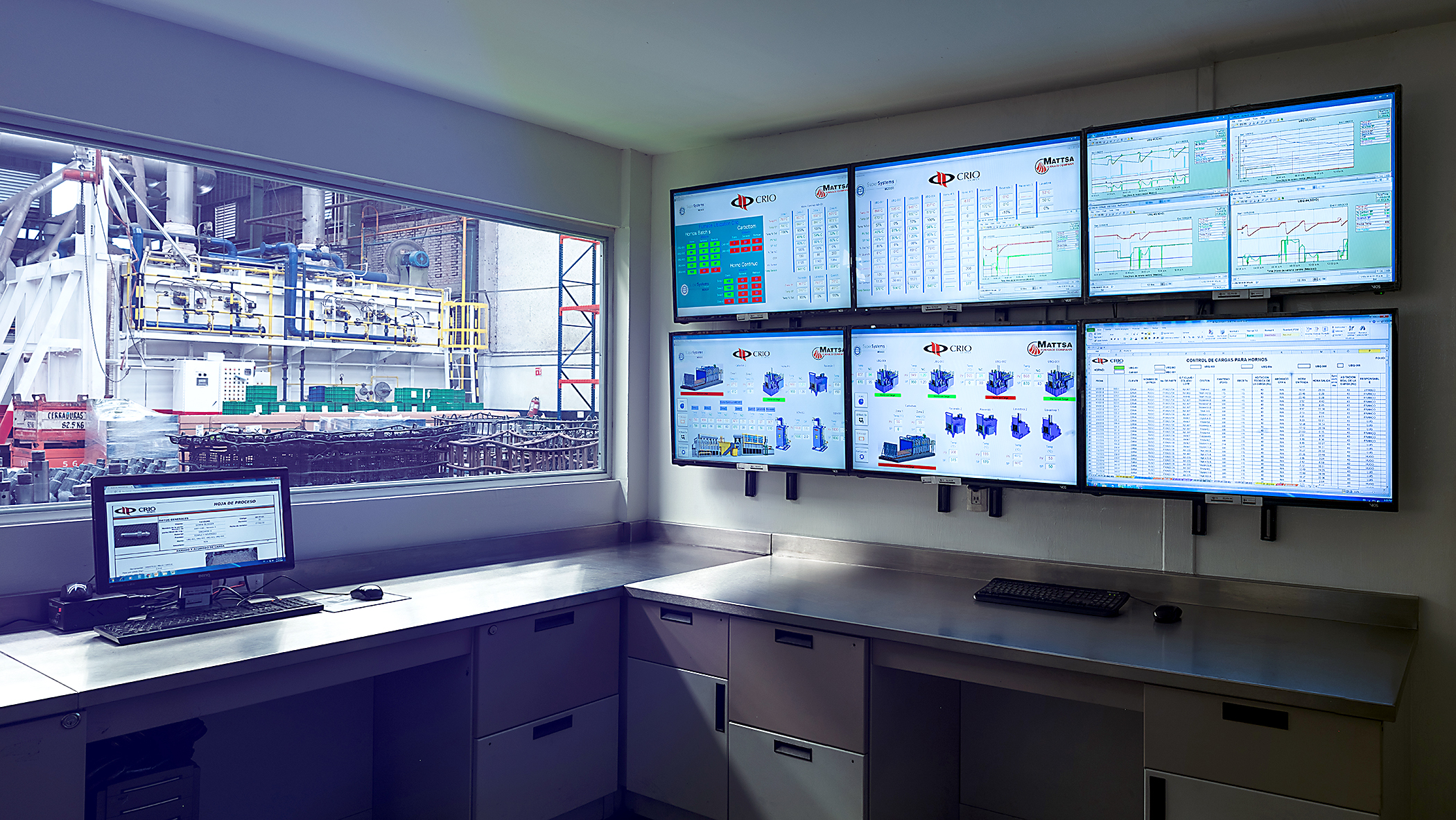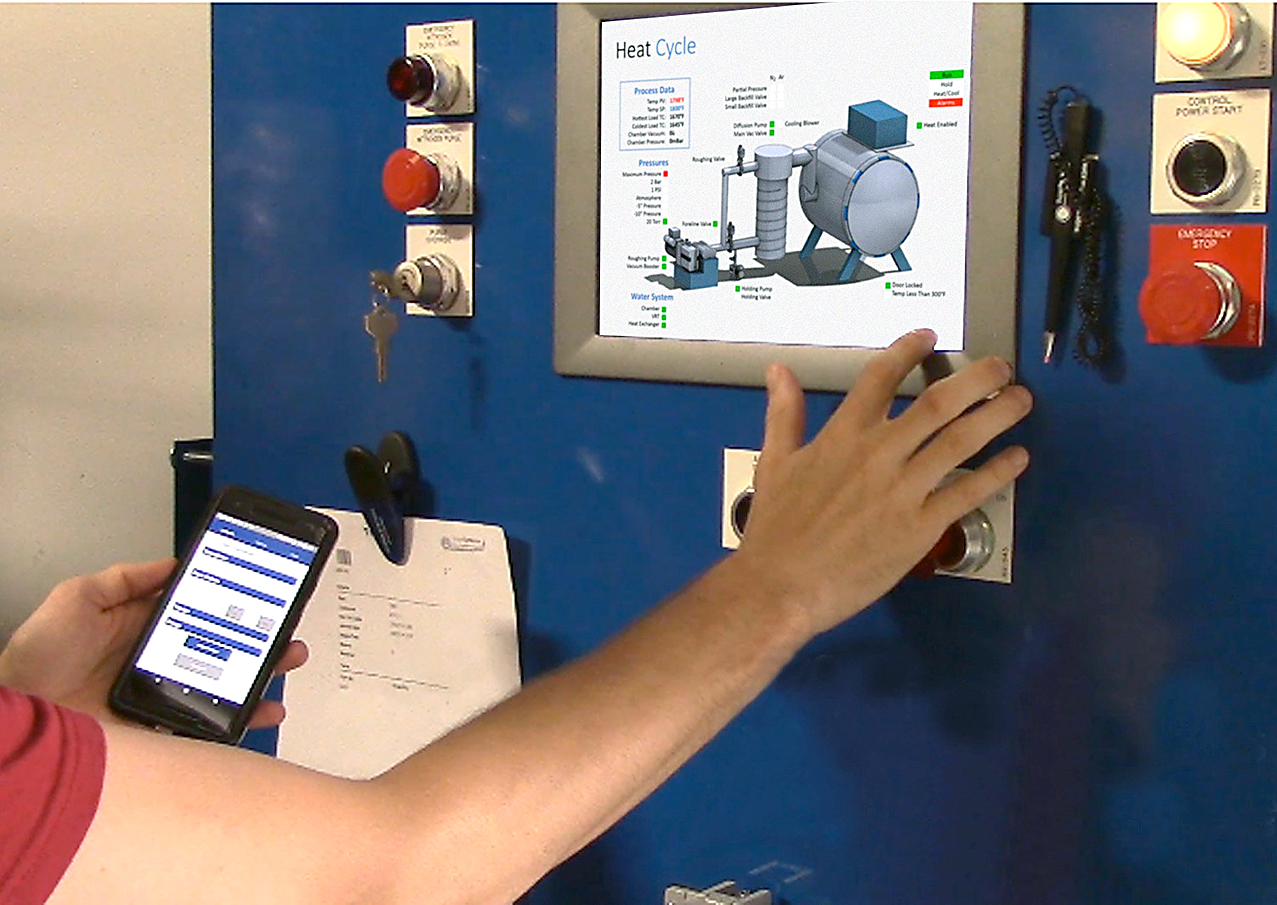
There is a changing landscape on two fronts in the thermal processing market. Without a doubt, there are technological opportunities that companies can take advantage of for quality, productivity, and financial gains. In addition, the labor market has changed due to a large part of the experienced workforce retiring and a lack of willing and knowledgeable workers to step in. Of course, this is one of many changes taking shape in the thermal markets today, but let’s talk about how these impact the quality of thermal processing.
Data
The Industrial Internet of Things (IIoT) is certainly not new and has been discussed often when it comes to manufacturing. The foundation of the IIoT is data — data derived from smart devices and sensors. What this means for businesses is the opportunity to use information to refine and develop more efficient processes to achieve the desired metallurgical results. Process refinement has always been built into manufacturing processes through a focus on continuous improvement through process feedback. In many cases, this is done through studies and evaluation of the existing process and specific to heat treating the metallurgical results.
 Technology is creating an opportunity to take the improvement one step further. Automated controls and digital data have been available for many years, putting more and more new information in the hands of systems and people to perform more efficiently, meet industry specifications, and deliver quality. Sensor and control technology provide insight into equipment health and operation costs — and with current costs and readily available technology, these are all within reach for implementing on existing thermal-processing equipment. The additional sensors tied into the right control system can deliver the proper atmosphere, temperature, and precise time that is just right for the metallurgy desired. The IIoT, or Manufacturing 4.0, are all about data and creating a view into operations, looking at people and equipment with an opportunity to plan and anticipate.
Technology is creating an opportunity to take the improvement one step further. Automated controls and digital data have been available for many years, putting more and more new information in the hands of systems and people to perform more efficiently, meet industry specifications, and deliver quality. Sensor and control technology provide insight into equipment health and operation costs — and with current costs and readily available technology, these are all within reach for implementing on existing thermal-processing equipment. The additional sensors tied into the right control system can deliver the proper atmosphere, temperature, and precise time that is just right for the metallurgy desired. The IIoT, or Manufacturing 4.0, are all about data and creating a view into operations, looking at people and equipment with an opportunity to plan and anticipate.
Most heat treaters today have electronic information readily available for validation of the thermal treatment performed on the parts they are running. What is missing is the ability to provide a centralized view with specific data for the person evaluating that slice of information, which is relevant to their contribution of the manufacturing/heat-treating process. With this shared approach, a synchronized operation can be achieved, creating understanding across job responsibilities and the ability to squeeze out more efficiencies.
People
There are two pieces to the labor puzzle as I see it. The first is what we are battling with an aging work force, experience, and headwinds from the pandemic. The second addresses the changing in technology and how to maximize the tools that we have or can have in the future.
The implementation of continuous improvement should constantly involve evaluating areas in the business where quality and efficiency can be increased through change. In some cases, this is through automation. For years, industrial automation has been introduced into manufacturing to combat workforce challenges and increase throughput. Very large manufacturing operations have used automation and robotics because they can justify the capital for these projects. Projects on a smaller scale, both from a capital and scope standpoint, are being rolled out to smaller companies because they are within reach to implement and there is flexibility in their use. No longer do you need millions of dollars for automation and years of a specific program to justify the investment.
The automation and technology bring a new challenge to the mix when it comes to labor. Yes, we are battling a lack of work force on the manufacturing floor using the technology, but we are also introducing the need for a skillset that might not be in place. Using the earlier topic of data, most companies have so much of it they don’t know how to take advantage of it all. There are hundreds of thousands to millions of data points being logged in a commercial or captive heat-treat operation on a single day. There is a multitude of benefits hidden in the millions of data points, but only a small subset of that data is ever being used.
 If we start to look deep into the data and explore the predictive nature in the information that is available, we can see where maintenance, scheduling/planning, and process setup could all benefit from data mining and even process learning. This not only requires infrastructure such as computers and networking, but software tools to learn and create meaningful information. To fully benefit from technological advancements and investments, some additional resources or partners will be necessary to support the industry in the area of Information Technology and Data Analytics.
If we start to look deep into the data and explore the predictive nature in the information that is available, we can see where maintenance, scheduling/planning, and process setup could all benefit from data mining and even process learning. This not only requires infrastructure such as computers and networking, but software tools to learn and create meaningful information. To fully benefit from technological advancements and investments, some additional resources or partners will be necessary to support the industry in the area of Information Technology and Data Analytics.
Along the same lines of technical resources for data, there is also demand for resources with the ability to address automation and more sophisticated controls and sensors. With a very “connected” shop floor, maintenance knowledge needs to incorporate new technology to ensure that equipment is properly maintained and meeting operating objectives. In some cases, there is a need for specialized automation or robotics technicians and engineers to deploy and support the operation and to redeploy when change is necessary.
Conclusion
The industrial automation market undoubtedly will continue to grow and the heat-treating industry will reap the advantages, which include lower operating cost, reduction in human error, lower wastage, efficient manufacturing, synchronization of procedures, and quality production. The advancements of sensor technology and computing power provide the foundation for better and automated decision making. Many in the heat-treat community have this in place today as a foundation for a path forward to tomorrow’s automation and IIoT advancements.


























